Workers view healthcare as a critical issue
Workers in a recent EBRI study rank healthcare as the most critical issue facing the nation and one of the most important considerations when they're contemplating a career move. In fact, nearly a quarter of all employees surveyed ranked health insurance as a top three most important benefit when they're considering a job change.
Benefits Ranked "Extremely important" When Considering Job Change
73%
Health insurance
57%
Retirement savings plan
Healthcare expenses on the rise
Approximately 34% of workers say they feel confident that they can afford healthcare without financial hardship today, but confidence decreases to just 20% over the next 10 years.*
Confidence to Afford Healthcare without Financial Hardship
34%
Today
20%
Over the next 10 years
HSA market reaches new highs
The number of HSAs now exceeds 25 million, holding $53 billion in assets, a year-over-year increase of 19% for HSA assets and 13% for accounts. HSAs can include both deposit and investments assets. Deposits are low-interest savings accounts where individuals have easy access to their assets. Individuals also can invest in mutual funds and stocks, similar to retirement plans.
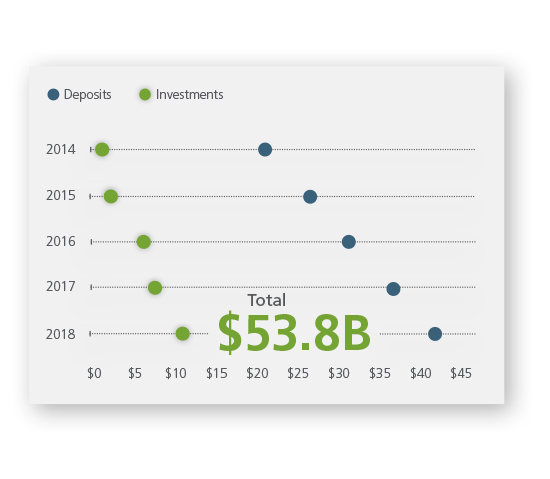
Total HSA Assets (in Billions)
HSA enrollment growth outpaces prior year
Many in the industry were left surprised by the minor slowdown in HSA enrollment growth in 2017. Though the 2017 growth rate reached double digits at 11%, it still represented a slower rate than prior years. In 2018, we saw HSA adoption gain speed once again, with total number of enrollments growing by 13% year-over-year. Devenir also reports that the number of unfunded accounts as of year-end dropped to just 16% compared to 20% at the same time in 2017.
Total Health Savings Accounts (in Millions)
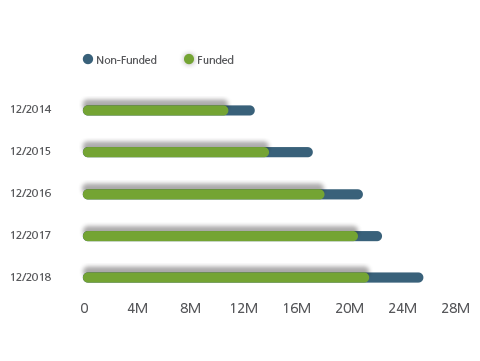
More employers offering an HDHP paired with an HSA
As employers move to high deductible health plans (HDHPs) that are paired with HSAs, employees rely on payroll deduction to make contributions. Employers are the leading driver of new account growth, accounting for 26% of all health savings assets contributed in 2018.
26
%
of all HSA contributions came from an employer57
%
of all HSA contributions came from an employee13
%
of all HSA contributions came from an individual not associated with an employer
Young savers becoming more active within HSA market
As we’ve highlighted, more employers are bundling health savings accounts into their employee benefits packages to help employees manage high deductible healthcare plans. As a result, younger generations of employees are becoming a major piece of the health savings account market.
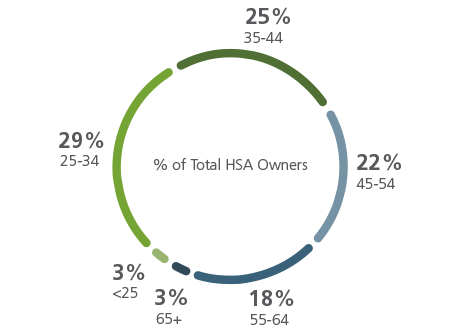
Data from Chard Snyder, an Ascensus company, shows that savers ages 25 to 34 represent 29% of all HSA owners on our platform. Individuals ages 35 to 44 represent the second largest segment of savers, at about 25% of the total population of HSA owners.
How much health savings progress have Americans made?
Chard Snyder data suggests that younger savers tend to have smaller average HSA balances relative to older generations. However, the year-over-year carryover potential for these savings offers these younger savers the opportunity to continue to build these balances as they progress in their career. This carryover potential, along with triple tax advantages, is a distinct benefit of the health savings account.
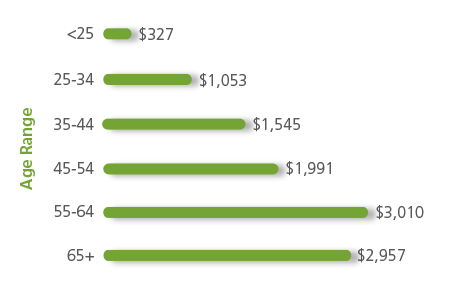
HSAs help secure financial wellness
HSAs are an important part of a saver’s overall retirement strategy as healthcare expenses continue to rise. With no "use-it-or-lose-it" rule and the ability to carry over balances from employer to employer, savers are becoming savvy on how to maximize their savings and growth potential.

retained assets from 2017 to 2018

in withdrawals
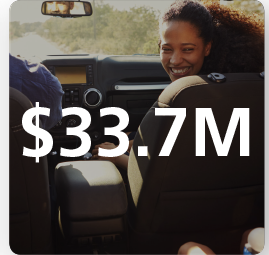
in contributions
HSAs provide growth opportunity
Future projections continue to show steady growth. Devenir estimates that by the end of 2020, total HSA assets will exceed $75 billion.
Estimated Total HSA Assets (in Billions)
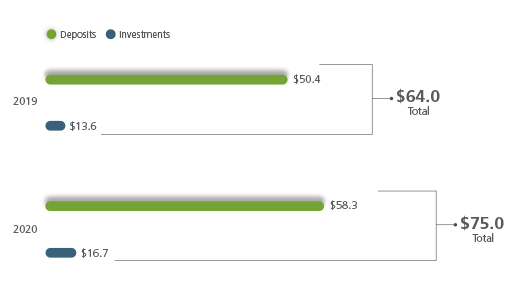
HSA investment assets predicted to increase
HSA investment assets have seen significant growth. However, only about 19% of all HSA assets are invested. As more account owners learn about the opportunity to invest their health savings, the overall percentage of invested HSA assets is expected to increase.
% of HSA Assets in Investments
Investing for future healthcare needs

HSA investments were over $10 billion at the end of 2018, up 23% year-over-over—as more people transition from traditional saving to investing.
The average total balance is $14,617 (includes balances in an HSA owner's deposit and investment account), over 9 times larger than a noninvestment account owner's balance.
23%
year-over-year increase in HSA investment assets$14,617
average account balance of HSA investment accountEducation is key to understanding HSAs

A recent WEX Clear Health Insights report states that the majority of individuals surveyed believe that their employers’ 401(k) plans offer the most pretax savings benefits. While HSAs actually offer the most pretax savings, only 13% of respondents are aware of these advantages. Additionally, over half were not aware that they could invest their HSAs in mutual funds or stocks.
